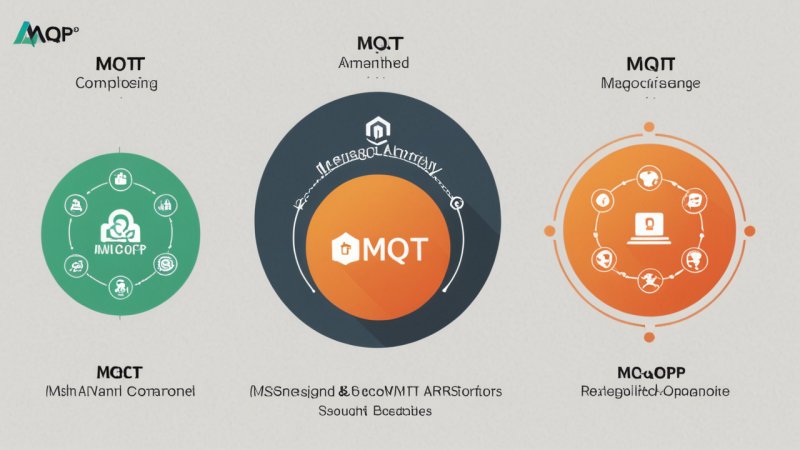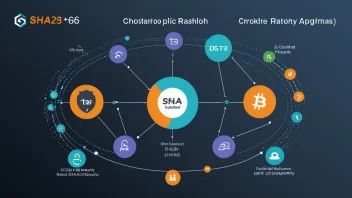In the realm of messaging systems, two prominent protocols stand out: Advanced Message Queuing Protocol (AMQP) and Message Queue Telemetry Transport (MQTT). Both are designed to facilitate communication between different components of distributed systems, but they cater to different use cases and have distinct characteristics. This article will explore the strengths and weaknesses of both protocols, providing a comprehensive comparison to help you understand which might be best suited for your specific needs.
Overview of AMQP
AMQP is an open standard protocol that enables message-oriented middleware. It is designed for high reliability and interoperability across various platforms. AMQP supports a wide range of messaging patterns including point-to-point, publish-subscribe, and request-response. It provides features like message acknowledgments, queuing, and transactions, making it ideal for complex enterprise applications.
Pros of AMQP
- Interoperability: AMQP is platform-agnostic, allowing different systems to communicate seamlessly.
- Reliability: Guarantees message delivery through acknowledgments and confirmations.
- Rich Feature Set: Supports transactions, queuing, and more complex messaging patterns.
- Security: Offers robust security features including encryption and authentication.
Cons of AMQP
- Complexity: The rich feature set can make AMQP more complex to implement and manage compared to simpler protocols.
- Overhead: The protocol can introduce additional overhead due to its extensive features, which may not be necessary for simpler applications.
Overview of MQTT
MQTT is a lightweight messaging protocol optimized for low-bandwidth, high-latency, or unreliable networks. It is particularly popular in the Internet of Things (IoT) landscape due to its efficiency and minimal resource requirements. MQTT employs a publish-subscribe architecture and is designed to be simple and easy to implement.
Pros of MQTT
- Lightweight: MQTT is designed to be minimal, making it ideal for devices with limited processing power.
- Low Bandwidth: Efficient use of bandwidth, which is crucial for IoT applications.
- Ease of Use: Simple to implement and requires minimal configuration, making it accessible for developers.
Cons of MQTT
- Lack of Features: MQTT lacks some advanced features present in AMQP, such as message queuing and transactions.
- Reliability Concerns: While MQTT supports different Quality of Service (QoS) levels, it may not guarantee message delivery in all scenarios.
Comparison of Use Cases
When it comes to choosing between AMQP and MQTT, the decision often boils down to the specific requirements of your application. AMQP is typically favored in enterprise environments where reliability and advanced features are paramount. It is well-suited for applications that require guaranteed message delivery and complex routing capabilities.
On the other hand, MQTT shines in scenarios where lightweight communication is essential, such as in IoT applications. Its ability to function effectively on low-bandwidth networks makes it ideal for devices that require efficient data transmission with minimal overhead.
Performance Considerations
Performance is a critical factor when comparing AMQP and MQTT. AMQP's robust feature set can sometimes lead to higher latency, particularly in scenarios with complex routing and queuing. Conversely, MQTT is designed for speed and efficiency, offering lower latency and better performance on constrained networks.
Security Features
In terms of security, AMQP provides built-in support for encryption and authentication, making it suitable for applications that handle sensitive data. MQTT, while it can also support secure connections via TLS/SSL, may require additional configuration for robust security measures. Therefore, organizations handling critical information may lean towards AMQP for its comprehensive security features.
Community and Support
Both AMQP and MQTT have strong community support, with numerous libraries and tools available to facilitate their implementation. AMQP has a slightly larger enterprise backing, which can be beneficial for organizations looking for commercial support. In contrast, MQTT enjoys a vibrant community within the IoT space, with numerous resources dedicated to its use in smart devices and applications.
Conclusion
In conclusion, both AMQP and MQTT have their unique strengths and weaknesses, making them suitable for different applications. If your project requires a reliable, feature-rich messaging system with robust security and complex messaging patterns, AMQP may be the better choice. However, if you are developing an IoT application or require a lightweight protocol for low-bandwidth environments, MQTT could be the most efficient option. Ultimately, your choice should depend on the specific requirements of your application and the environment in which it will operate.






